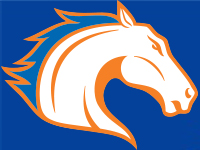ARGENTINA (6/26/14)
- 1860-1916: Traditional Oligarchy
- Agro-export, pampas, foreign investment, immigration
- 1912 electoral reforms under Saenz Pena
- 1916-30: Radical period
- Hipolito Yrigoyen (1916-22, 1928-30)
- “Light that failed”
- Semana Tragica, 1919
- 1930: Military coup
- Gen. Uriburu
- Nationalism and protectionism
- 1932-43: Conservatives return, return to free trade
- Justo, 1932-38
- Roca-Runciman Pact of 1933
- 1943: Military coup
- Group of United Officers (GOU)
- Nationalist, anti-imperialist, “fascist,” pro-Axis
- Juan Peron, head of Department of Labor
- Peron arrested, Oct. of 1945; freed after demonstrations Oct. 17, 1945
- 1946-55: Peron
- Easily defeats the “old order” in 1946 elections
- Populist—multi-class coalition of national entrepreneurs and labor
- Postwar prosperity—accumulation of foreign exchange surpluses and pent-up demand for exports
- Nationalized railways, urban transport, utilities
- Favored consumer goods industries
- Sectoral clash—favored industry over agriculture—state trade monopoly—state bought agricultural goods at artificially low prices and sold them at much higher international prices, profit redistributed to industrial sector--Argentina Trade Promotion Institute (IAPI)
- Eva Peron—lower class, difficult life, actress, met Peron in 1944, married on Oct. 21 of 1945, often credited with the Oct. 17 of 1945 demonstrations to free Peron
- Eva Peron Foundation
- Cult of personality for the Peron’s
- More image than substance?
- Descamisados
- Died, 1952—canonization?
- 1951 election, Peron re-elected by wide margin
- But decline of Peron’s popularity begins: economic decline, loss of postwar advantages, death of Eva, growing polarization
- 1955-58
- Military coup overthrows Peron, 1955
- Transitional
- Reversed “Peronism”—party, unions, policies, institutions (IAPI)
- 1958-62
- 1958 election—Arturo Frondizi (Radical)
- Peronists officially “banned,” but Frondizi strikes secret deal with Peronists
- 1962 legalizes Peronists
- 1962-63
- Military coup ousts Frondizi, 1962
- Transitional
- Annuls local elections won by Peronists
- Bans Peronism
- 1963-66
- 1963 election—Arturo Illia (Radical)
- 1965—legalizes Peronists
- 1966-1973
- June 28, 1966, military coup ousts Illia
- Onset of “Bureaucratic-authoritarianism”
- Not simply transitional
- Led by General Ongania
- Closed Congress, abolished unions and parties, economic austerity
- 1969 “Cordoboza” demonstrate opposition and begin transition to civilian rule
- 1973-76
- Second Peronist Period
- Peron allowed to return from exile and is elected President
- But unable to unify his movement or the nation
- Natural death in 1974
- Succeeded by his VP (and third wife), Isabel
- Isabel seen as incompetent (occultist)
- 1976-1983
- March 24, 1976 military coup ousts Isabel Peron
- Led by General Videla
- Return to “Bureaucratic-authoritarianism”
- Even more repressive—“Dirty War”
- March, 1982—Under Gen. Galteiri, Argentina initiates “Falklands/Malvinas War”
- June, 1982—Argentina defeated and withdraws—Galteiri resigns presidency
- Military begins transition to civilian government
- 1983—present
- “Return of democracy”—but presidential resignations, economic crises, constitutional changes, successive interim presidents, etc.
- 1983-89—Alfonsin (Radical)—elected—prosecuted some military leaders—but resigned early due to economic woes, riots, etc.
- 1989-99—Menem (PJ, or Partido Justicialista—Peronist)—elected—pardoned military leaders—modified constitution to allow for presidential re-election—was re-elected to 2nd term—further efforts to win the presidency were all stymied—subject to charges of corruption after leaving office.
- 1999-2001—de la Rua (Radical)—elected—forced resignation after 2 years in office—economic woes, unpopular austerity, riots. Faced numerous charges of corruption and police repression after leaving office.
- 2001-2003—succession of two PJ Presidents—both selected by the Congress
- Rodriguez Saa—served 7 days—resigned early after riots, economic chaos, default on the national debt, etc.
- Duhalde—served just over a year—resigned in 2003—first postponed elections, than was forced to call elections 6 months earlier than planned.
- 2003 elections—Nestor Kirchner (PJ, “leftist”) elected over Menem. Inaugurated in May of 2003 to a 4-yr. term. Not well-known initially, but aggressively pursued prosecution of previous military leaders. Some official reports of embezzlement-but never charged. Died in 2010 of a heart attack
- 2007-present—Cristina Fernández de Kirchner (wife of Nestor Kirchner). First elected female president of Argentina. PJ. Due to economic progress, has rebounded from low popularity after a tax revolt by farmers in 2008. Won a national primary in August, 2011—portending victory in the October presidential election without a run-off.
CONCLUSION
- Stages
- Export-oriented and Traditional Oligarchy—through 1930s
- Easy ISI and Populism—Peron—1940s and 1950s
- Hard ISI and B-A—1960s and 1970s
- Problems of economic disappointments and political instability
- Agro-export oligarchy not replaced (1930s—Peronist eco. policies too “easy”)
- Continued eco. dependence
- No dominant pol. movement
- Militancy of labor
- Interventionism of military
|



